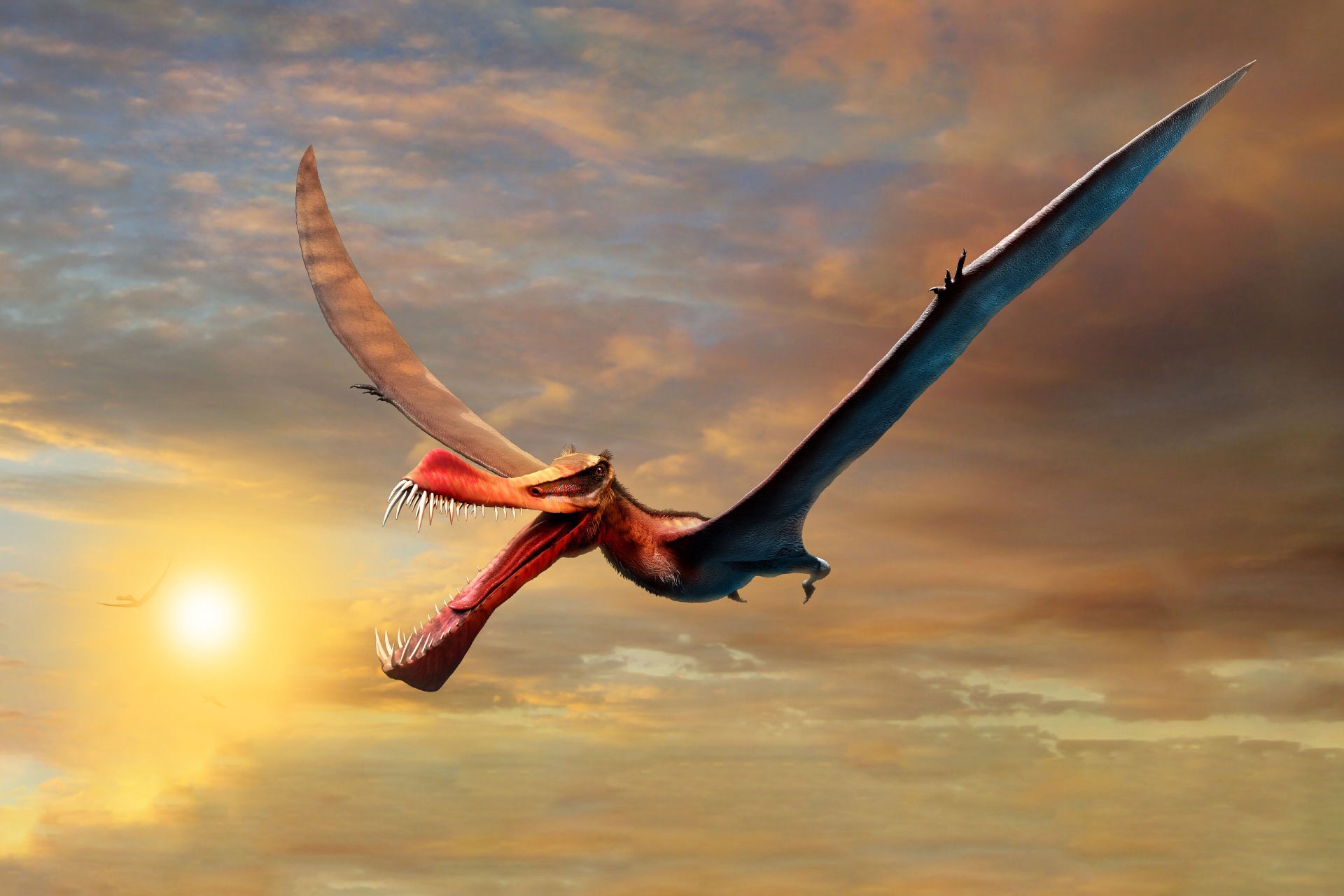
Thapunngaka shawi might sound like a mouthful, but this ancient creature is nothing short of fascinating. Imagine a flying reptile with a wingspan as wide as a small airplane, soaring through the skies of what is now Australia. Thapunngaka shawi lived around 105 million years ago during the Cretaceous period. This pterosaur had a jaw filled with sharp teeth, perfect for snatching fish from the water. Its name, derived from an Indigenous Australian language, means "mouth of the river." Scientists believe it was one of the largest pterosaurs to ever exist. Ready to dive into 37 amazing facts about this prehistoric giant? Let's get started!
Key Takeaways:
- Thapunngaka Shawi, a 23-foot pterosaur with a spear-like beak, lived 105 million years ago in Australia. Its discovery has sparked curiosity and inspired further exploration of prehistoric life.
- Thapunngaka Shawi's unique features, powerful flight abilities, and significant discovery have made it a popular subject in documentaries, books, and educational programs, captivating the imagination of dinosaur enthusiasts worldwide.
Thapunngaka Shawi: A Prehistoric Marvel
Thapunngaka Shawi, an ancient pterosaur, soared through the skies millions of years ago. This fascinating creature has captured the imagination of paleontologists and dinosaur enthusiasts alike. Let's dive into some intriguing facts about this prehistoric marvel.
- Thapunngaka Shawi lived during the Cretaceous period, around 105 million years ago.
- It belonged to the Anhangueridae family, a group of pterosaurs known for their impressive wingspans.
- The name "Thapunngaka" means "spear mouth" in the Wanamara language, reflecting its long, pointed beak.
- "Shawi" honors Len Shaw, the fossil's discoverer.
- This pterosaur had a wingspan of approximately 23 feet, making it one of the largest flying reptiles of its time.
- Its fossil was found in the Winton Formation in Queensland, Australia.
- Thapunngaka Shawi's beak was filled with sharp, conical teeth, ideal for catching fish.
- It likely had a crest on its head, which may have been used for display or aerodynamic purposes.
- The pterosaur's bones were hollow, reducing its weight and aiding in flight.
- Thapunngaka Shawi's wings were made of a membrane stretched between its elongated fingers and body.
Anatomy and Adaptations
Understanding the anatomy and adaptations of Thapunngaka Shawi helps us appreciate how it thrived in its environment. Here are some fascinating details about its physical characteristics and survival strategies.
- Its long, pointed beak allowed it to snatch fish from the water with precision.
- The sharp teeth were perfect for gripping slippery prey.
- Thapunngaka Shawi's large eyes provided excellent vision, crucial for spotting prey from the air.
- The crest on its head may have helped stabilize it during flight.
- Its lightweight skeleton made it an efficient flyer, capable of covering long distances.
- The wing membrane was likely reinforced with fibers, adding strength without adding weight.
- Thapunngaka Shawi's powerful flight muscles enabled it to take off from the ground or water with ease.
- Its tail was short, reducing drag and improving maneuverability in the air.
- The pterosaur's feet were adapted for perching, allowing it to rest on cliffs or trees.
- Thapunngaka Shawi's keen sense of smell helped it locate food sources.
Discovery and Significance
The discovery of Thapunngaka Shawi has provided valuable insights into the diversity and evolution of pterosaurs. Here are some key points about its discovery and significance.
- The fossil was discovered in 2011 by Len Shaw, an amateur fossil hunter.
- It was identified and named by a team of paleontologists from the University of Queensland.
- Thapunngaka Shawi is one of the most complete pterosaur fossils found in Australia.
- Its discovery has shed light on the distribution of pterosaurs in the Southern Hemisphere.
- The fossil includes a well-preserved skull, providing detailed information about its anatomy.
- Thapunngaka Shawi's discovery has helped scientists understand the diversity of pterosaurs during the Cretaceous period.
- It has also provided insights into the evolution of flight in reptiles.
- The fossil is now housed in the Kronosaurus Korner museum in Richmond, Queensland.
- Thapunngaka Shawi has become a symbol of Australia's rich paleontological heritage.
- Its discovery has inspired further exploration and study of the Winton Formation.
Thapunngaka Shawi in Popular Culture
Thapunngaka Shawi has captured the imagination of the public and has made appearances in various forms of media. Here are some interesting facts about its presence in popular culture.
- Thapunngaka Shawi has been featured in documentaries about prehistoric life.
- It has appeared in books and articles about pterosaurs and the Cretaceous period.
- Artists have created detailed reconstructions of Thapunngaka Shawi, bringing it to life for modern audiences.
- The pterosaur has inspired toys and models, allowing enthusiasts to have a piece of prehistory.
- Thapunngaka Shawi has been the subject of educational programs and exhibits in museums.
- Its unique name and impressive size have made it a favorite among dinosaur enthusiasts.
- Thapunngaka Shawi continues to inspire curiosity and wonder about the ancient world.
Final Thoughts on Thapunngaka Shawi
Thapunngaka Shawi, a fascinating creature from the Cretaceous period, continues to captivate scientists and enthusiasts alike. With its impressive wingspan and unique jaw structure, this pterosaur offers a glimpse into a world long gone. The discovery of its fossils in Australia has provided valuable insights into the diversity and evolution of pterosaurs.
Understanding Thapunngaka Shawi helps us appreciate the complexity of prehistoric life and the ever-changing nature of our planet. Each new finding adds another piece to the puzzle, enriching our knowledge of Earth's history. As research progresses, we can expect even more intriguing revelations about this incredible species.
So, next time you think about dinosaurs, remember Thapunngaka Shawi and the remarkable story it tells. This ancient flyer is a testament to the wonders of paleontology and the endless mysteries waiting to be uncovered.
Frequently Asked Questions
Was this page helpful?
Our commitment to delivering trustworthy and engaging content is at the heart of what we do. Each fact on our site is contributed by real users like you, bringing a wealth of diverse insights and information. To ensure the highest standards of accuracy and reliability, our dedicated editors meticulously review each submission. This process guarantees that the facts we share are not only fascinating but also credible. Trust in our commitment to quality and authenticity as you explore and learn with us.


